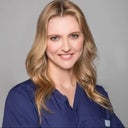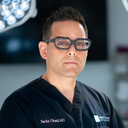Posted underBreast Augmentation q&a
What are the activity restrictions following a fat transfer breast augmentation?
I recently had a fat transfer breast augmentation to correct issues from a previous reduction. I love my new surgeon, however, his post-op activity guidelines seem different from what I'm seeing recommended here. Wondering what limitations are recommended after a fat transfer to ensure the best fat retention and shape? Specifically when can I get back to sleeping on my stomach, playing volleyball, wearing underwire and push-up bras, yoga, lifting weights, and other strenuous workouts?
Answers (9)
From board-certified doctors and trusted medical professionals
Dr. Franziska Huettner, MD, PhD, FACS

Dr. Franziska Huettner, MD, PhD, FACS
Board Certified Plastic Surgeon
Answer
Dr. Kenneth Hughes, MD

Dr. Kenneth Hughes, MD
Board Certified Plastic Surgeon
Answer
Dr. Heather Vande Ven, DO
Dr. Heather Vande Ven, DO
Board Certified Plastic Surgeon
Answer
Dr. Johnny Chung, MD, FACS
Dr. Johnny Chung, MD, FACS
Board Certified Plastic Surgeon
Answer
Dr. David Janssen, MD, FACS
Dr. David Janssen, MD, FACS
Board Certified Plastic Surgeon
Answer
Dr. Anna I. Wooten, MD, FACS
Dr. Anna I. Wooten, MD, FACS
Board Certified Plastic Surgeon
Answer
Dr. Olivier Deigni, MD
Dr. Olivier Deigni, MD
Board Certified Plastic Surgeon
Answer
More Breast Augmentation Questions
See all Breast Augmentation Q&AWE SEND PRETTY
EMAILS
What’s trending? Who’s turning heads? Which TikTok myths need busting? We’ve got you. No fluff, no gatekeeping—just real talk. Get our free, unfiltered newsletter.
